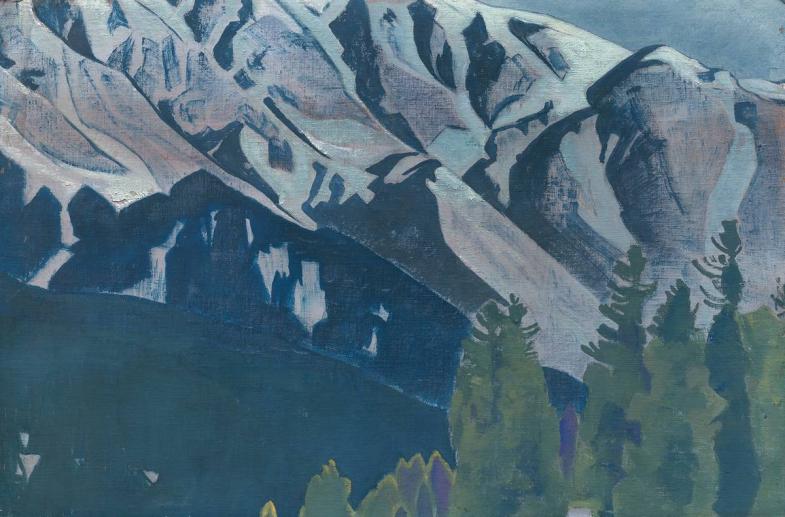A long-term staying in Gulmarg contributed to the productive work of the artist. Here he created paintings devoted to the different stages of the way passed by the Central Asian expedition, as well as the majority of the paintings of "The Banners of the Eeast" series. Nikolay Roerich admired the beautiful snowy slopes of Mount Afarwat of the Pir Panjal Range, whose foothills are overgrown with dense coniferous forests. The work from our collection depicts one of these views. Currently, it is a favorite holiday destination for lovers of Alpine skiing from all over the world.
"We live in the highlands of the Pir Panjal Range. Hailstones are as large as a pigeon egg. Stars are bright like candles! Earthquakes happen every week. In Siberia, there are such fortifications on steep hillocks, belted by growling streams. Cedar and pine groves severely guard these dwellings, and the white caps of the mountains glitter against the sky. Woodpeckers, turtledoves, orioles, musk sheep and mountain goats. So we live in a yellow, unpainted ore house. If the sun is shining, everything is filled with the smell of pine needles, but during a thunderstorm... Three days it fiercely rattled and blinded us at night. A ring of lightning! Hailstorm rushed, and hail immediately whitened all the green hillocks. It was terrible!".
N.K. Roerich. Altai – Himalayas.


